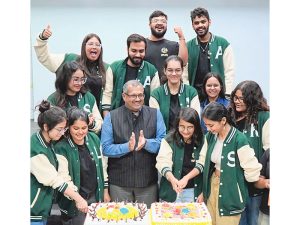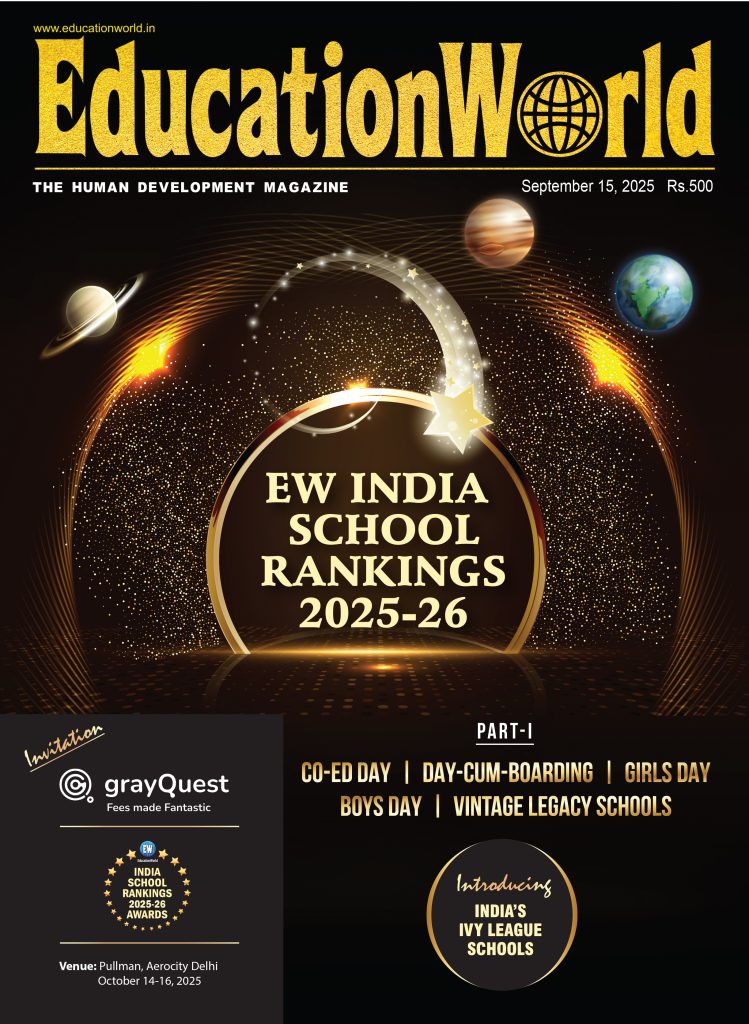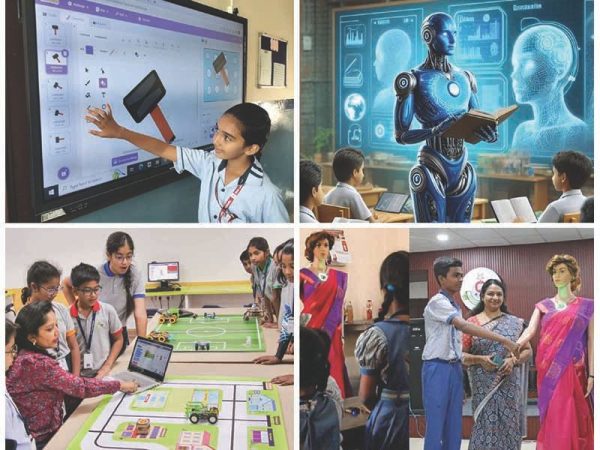21 Higher education leaders racing to develop india’s high-potential human resource: Sanjay Gupta
Sanjay Gupta
Vice Chancellor, World University of Design, Sonipat

An alum of IIT-Delhi, IIM-Ahmedabad and Fashion Institute of Technology, New York (USA), Sanjay Gupta is founding Vice Chancellor of the World University of Design (WUD), Sonipat (estb.2018).
What are the major objectives set for WUD for India’s 100th Freedom Anniversary in 2047?
By 2047, WUD intends to emerge as a global leader in creative education and a hub for design-led development. Our long-term goals include expanding international academic collaborations, building deep partnerships with industry for research and innovation, and shaping a generation of creative leaders who can address social, economic, and environmental challenges. We also intend to institutionalise our unique approach to interdisciplinary education and design thinking across all fields — from engineering and management to the arts and humanities.
How satisfied are you with your progress thus far?
Our progress has been influential and is measurable. When WUD was established, design education was largely confined to a few specialised institutions. Today, hundreds of universities and thousands of colleges across India have launched design programs. This is an ecosystem shift that WUD has catalysed. We’ve been in the vanguard of recognising skills of the future.
Perhaps more significantly, WUD was the first HEI to structurally group art, architecture, and design under one academic umbrella. This model has now spread to other HEIs, including government-backed events like the Delhi Art Biennale. In that sense, our progress has been foundational, rather than institutional.
What are your major initiatives to contemporise your syllabus/curriculum?
Our curriculum is built on the foundational idea that creativity has to be dynamic and evolving constantly. In WUD, we’ve introduced flexible pathways that encourage students to combine major and minor subjects across disciplines, through electives, and learn in real-world studios and labs. We had also implemented all the radical provisions of the NEP 2020 — multi-exit options, credit transfers, internships, and community engagement — well before they became mandatory.
In terms of pedagogy, we’ve adopted a design-based approach that emphasises studio learning, iterative problem-solving, and community-linked projects. Many of our teaching interventions — such as the Visual & Performing Arts integration with leadership training, our collaborative thesis projects — are openly shared and have been emulated by newer HEIs.
How satisfied are you with your connect with Indian industry and business?
Our industry engagement has become very strong in sectors that value creativity — design studios, cultural organisations, architecture firms, fashion brands, e-commerce retailers, IT companies and digital startups. About 80 percent of our students are deeply involved in industry-led graduation projects, and several of our study programs are co-designed with industry leaders and professionals. The fact that we’ve placed our graduates with global and national corporate leaders in design, animation, UX, and product innovation is testimony to industry’s confidence in our curricula. The excellent remuneration that WUD alumni command are proof that our curriculums are deeply valued.
R&D and innovation are widely perceived as Indian academia’s infirmity. What’s your institutional response to create new knowledge?
At WUD, we prioritise knowledge creation as a core responsibility, especially in fields where empirical frameworks are still evolving — like design, visual & performing arts, and creative entrepreneurship. We’ve created a research culture that includes practice-based research work, multi-disciplinary research groups, and community-based innovation projects. Our approach to R&D is not to replicate the science lab model, but to build a design lab model — that values iteration, user feedback, cultural insight, and impact in the real world.
What’s your prescription for transforming India into a $30 trillion GDP economy by 2047?
India’s growth cannot rely solely on scale and technology. Creativity, cultural capital, and design thinking must necessarily be embedded into the national development model. This means not just building more factories and apps, but designing better systems, services, products, and experiences. The creative economy — including media, fashion, urban design, animation, and performing arts — can become a major contributor to GDP, employment, and global soft power.
To unlock this potential, the government must recognise the value of design as a national capability, not just a vocational skill.
How optimistic are you about India’s future growth and development?
I’m cautiously optimistic. We have the demographic edge, digital infrastructure, and a growing entrepreneurial culture. But these factor endowments must be continuously upgraded with investments in education that encourages imagination, critical thinking, and cross-disciplinary competence. India’s future can’t be secured by mere technical expertise; it will require humanistic intelligence and cultural fluency — skills that design education develops very well.
Also Read: World University of Design hosts seminar on Higher Education in Art
















Add comment